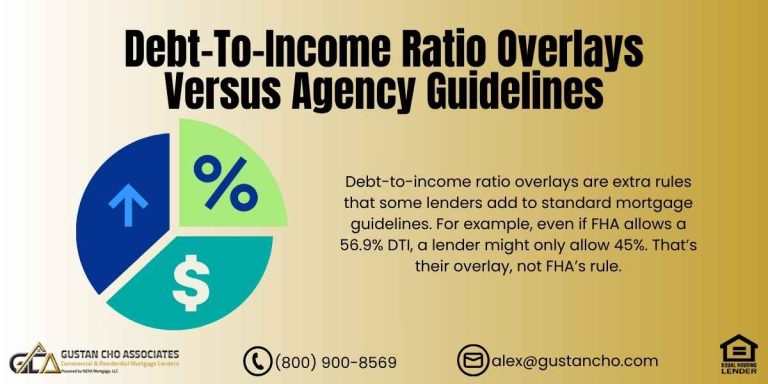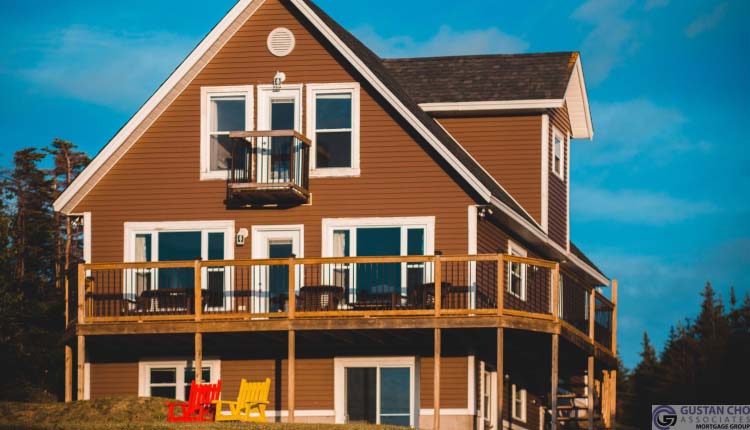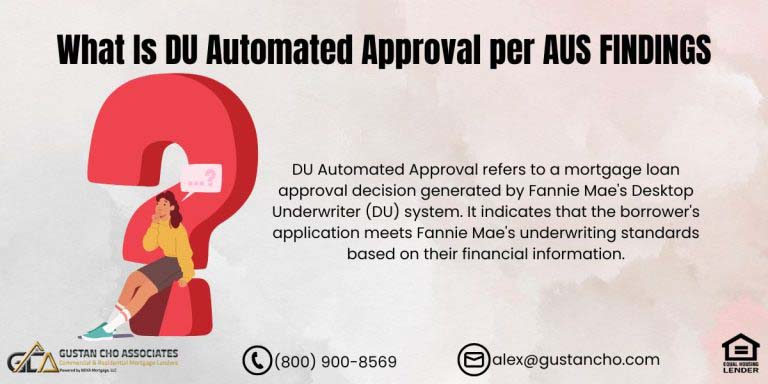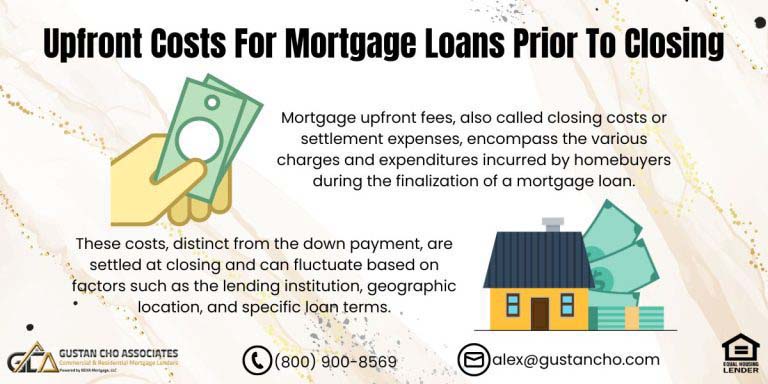This guide covers primary home status when qualifying for a mortgage. When a mortgage loan borrower applies for a residential mortgage home, there are three statuses.
- Primary home
- Second-home
- Investment home
All government loan programs are for primary home status only. Second homes and investment home loans do not qualify for any government loan programs. In this article, we will cover and discuss primary home status versus second and/or investment home financing when qualifying for a mortgage. In the following paragraphs, we will cover primary home status and why primary homes have lower mortgage rates than investment properties.
Comprehensive Guide on Primary Home Status When Qualifying for a Mortgage
When you apply for a mortgage, lenders want to know whether the house you plan to buy will be your primary home. This label can change how much money you can borrow, what interest rate you get, and even the down payment size. Because of that, future homeowners should be clear on what a primary home is and why it matters. In the following sections, we’ll explain Primary Home Status, what it means for your loan, and tips to help you qualify.
Buying a Home? Know What Qualifies as a Primary Residence
Lenders have strict rules for primary home status—get it right to avoid delays.
What is Primary Home Status?
A primary home, a phrase often swapped with primary residence, is where you plan to call home most of the year. Lenders look at your intention to live there full-time, not just weekends or summer visits, to decide whether the property fits this category. By making this judgment, they can distinguish between a primary house, a vacation spot, and a rental investment.
Key Characteristics of a Primary Home Status
Primary Home Status Occupancy
- To count as your main home, you usually have to stay there for at least six months and a day each year.
- Still, many lenders expect you to be there year-round unless you can show good reasons, like work travel or a temporary job, that pull you away.
Intent to Reside
- When you apply for a home loan, you must prove that the house will be your main place of residence.
- Lenders ask for copies of documents and a signed statement to back up that promise.
Single-Family or Multi-Family
- Your primary home can be in just about any style.
- A stand-alone house, condo, townhouse, or small 2-to-4-unit building.
- As long as you live in one unit yourself.
Why Primary Home Status Matters
Banks see mortgages for primary homes as safer than loans for vacation spots or rental apartments. People tend to pay the bills first for the roof over their heads, so lenders worry less that borrowers will walk away. Because of that extra safety, loans on primary residences usually come with:
- Lower Interest Rates-They cost less each month than a second or investment home loan.
- Lower Down Payment Requirements- Some programs ask for only 3 percent down.
- Access to Favorable Loan Programs: FHA, VA, and USDA funds are mostly reserved for primary homes.
How Lenders Verify Primary Home Status
Lenders review pay stubs and tax returns to double-check the story, and even contact the borrower after closing. Faking these facts can blow the deal and lead to fraud charges later.
Verification Methods
Loan Application Declaration
When applying for a mortgage, borrowers sign a declaration on the standard loan form, like Fannie Mae Form 1003, that states the home will be their primary residence.
Required Documents
- Driver’s License or State ID: The ID must show an address that matches or is close to the new property.
- Voter Registration: This record is checked to see if the borrower lists the new address as home base.
- Utility Bills or Lease Agreements: Recent bills or a current lease prove that the borrower lives where they say they do and plans to stay.
- Mailing Address: Lenders may request a bank statement sent to the new house after closing.
- Proximity to Employment: Lenders sometimes consider how practical the new commute is for a borrowerÕs job, especially when the move is a long distance.
- Post-Closing Audits: After closing, lenders may do surprise checks to confirm that the borrower lives in the house. This could mean a site visit or a request for fresh copies of the ID and utilities.
Red Flags for Lenders
Certain warning signs make lenders doubt whether a property is a primary residence.
- The new house is far from the borrower’s job, and the only reason given is remote work.
- The borrower already owns several homes, yet cannot explain why this one takes top priority.
- The moments after a home sale can feel hectic.
- Occasionally, new owners list the property for rent before the settlement paperwork even cools.
Mortgage Programs and Primary Home Status
Whether a home is a primary dwelling or an investment affects your available loan options and costs. Here’s a quick look at some of the biggest mortgage programs.
Conventional Loans
When buyers claim a house as their main residence, lenders may accept down payments as low as 3 percent (for approved applicants) and offer sharper interest rates. If the same property turns into a second home or rental, minimum down stakes usually climb to 10 or 20 percent, and the rate sticker tends to rise.
FHA Loans
The borrower must live in the house for a Federal Housing Administration loan, which has a modest 3.5 percent down payment upside when the credit score is 580 or above, plus rules that are more flexible for borrowers with shaky histories. FHA also stretches to two-to-four-unit buildings, as long as the purchaser occupies at least one side.
VA Loans
Veterans and service members hoping to take out a Department of Veterans Affairs loan must move in and swear they’ll do so, usually within 60 days of closing. If approved, borrowers enjoy zero down payment, skip pricey private mortgage insurance, and lock in some of the best rates in the market.
USDA Loans
Rural Development mortgages require the property to be the buyer’s main home, which sits within a qualifying rural zone.
Benefits of Primary Home Loans
Lenders often offer zero-down payment options and lower interest rates for low-to-moderate-income borrowers when a property qualifies as a primary residence.
Jumbo Loans
Unlike typical home financing, jumbo loans for primary residences usually carry better terms than the same loan taken for a vacation house or an investment property.
Keep in Mind: Banks generally require a stronger credit profile and higher income because loan amounts are larger.
Why Primary Status Matters for Mortgages
Classifying a property as your main home shapes nearly every part of the mortgage journey.
Clear Financial Wins
- Smaller Down Payments: Many FHA and conventional programs trim the down payment to just 3% or even zero when the house is your main address.
- Better Rates: Lenders view primary homes as less risky and price the loan with a lower interest rate.
- Tax Breaks: Owners may still deduct mortgage interest and local property taxes, a benefit usually reserved for the primary residence.
Your Mortgage Rate Depends on Home Type
Primary, second home, or investment? We’ll help you declare the right occupancy.
Occupancy Rules You Must Follow
- Most lenders expect you to move in within 60 days and stay for at least one year.
- Renting the place immediately, even on short-term contracts, can trigger severe penalties, like the bank calling the loan due or even lawsuits for suspected fraud.
Cheaper Insurance Costs
- Finally, homeowners’ insurance is cheaper on primary houses, meaning your monthly budget benefits again.
- Secondary and rental properties usually carry higher rates because they are seen as riskier for insurers.
Private Mortgage Insurance and Primary Home Status
- Private Mortgage Insurance (PMI) kicks in when buyers put less than 20% down on a conventional loan for a primary residence.
- However, it is not needed with special programs like VA loans, which waive the requirement altogether.
Challenges and Considerations
Even though being classified as a primary home brings perks, borrowers may still hit a few bumps or must plan carefully during the loan journey.
Relocation and Timing
People moving for work or personal reasons must prove that the new house will be their main address. This often means explaining short-term rentals, a long drive, or staying with family while the sale closes.
Lenders usually grant a grace period of 60 to 90 days so buyers can finish repairs. Still, they expect that delay to be neatly documented.
Multi-Family Properties
- When accepting FHA or conventional loans on a 2-—to 4-unit building, borrowers must occupy at least one of the units as their primary home.
- Income from the other apartments can help buyers qualify, yet lenders will still check whether the owner lives there.
Changing Primary Residence Status
- Once the initial occupancy requirement – normally around a year – passes, homeowners can convert the house to a second home or an investment.
- Still, they should ask their lender first so they know the rules.
- Loans like FHA and VA often enforce stricter guidelines, making early consultation even more important.
Fraud Risks
Misleading a lender about how you’ll use a house, waiting to call an investment to purchase your main home so you can snag easier mortgage terms, falls squarely in the loan fraud bucket. The fallout can be harsh, possibly forcing you into default or even landing you in court.
Practical Tips for Borrowers
If you plan to live in the new place and want Primary Home Status, here are a few commonsense steps to take:
Be Honest About Intent
When you fill out the application, tell the truth about how you’ll use the house. A simple lie can lead to fraud claims and ruin the loan.
Gather Documentation Early
Track down proof of residency, like a driver’s card or recent utility bills, so everything is on hand when the lender asks.
- Understand Loan Program Rules: Each loan type, plus FHA, VA, or USDA, has its own occupancy rules, so read up before you apply.
- Work with a Knowledgeable Lender: A seasoned mortgage pro knows these quirks and can steer you toward the best program.
- Plan for Occupancy: I plan to move in before the program’s deadline and live there for the required stretch, or the nice terms could disappear.
The status of a home as the place where you live most of the time matters a lot when you apply for a mortgage. It affects the interest rate you get, whether you qualify for the loan, and sometimes even how much money you save over the life of the loan. By learning the basic rules, how lenders check Occupancy, and what it means, you can feel more sure as you move through the mortgage steps.
For the smoothest experience, always talk with a reliable lender or mortgage expert who knows your local market. They will help you meet the occupancy rules and show you the financing options that make the most sense for your new primary home.
What Are Government Loans
The following are government loans:
- FHA loans
- VA loans
- USDA loans
FHA, VA, and USDA insured mortgage loans are only available for primary homes. These three government loan programs are not available for second and investment homes.
How Lenders Classify Owner Occupant Versus Non-Owner Occupant Properties
Lenders view owner occupant properties as less risk than second homes and investment property financing. That is why government loans do not allow second home and investment property mortgage financing. If a home buyer is buying a similar and like home, they are exiting less than 100 miles away. Most lenders will view this as an investment property. However, if a home buyer is exiting their current property and buying a second home due to a job relocation, then the buyer can make a claim that they are buying the second home as an owner occupant property.
Same with buying a second home. If a home buyer is a buyer a second home down the block from where they live, it will not be considered a second home but rather an investment home. However, is a home buyer is buying a beachfront condo such as a condotel unit, then the buyer can justify that they are buying a second home.
Second Homes And Investment Property Financing Versus Primary Home Status
Fannie Mae and Freddie Mac do allow second home financing and investment mortgage loans besides primary home loans. With conventional loans, there is a minimum 3% down payment on a home purchase for first time home buyers. Conventional home loans require a minimum of a 5% down payment is required for a primary home loans. 10% minimum down payment is required for second home financing. 15% to 20% minimum down payment is required for investment homes.
What Is a Primary Home for Mortgage Purposes?
Learn the key qualifications and how it affects your down payment, rates, and loan type.
Mortgage Rates On Conventional Loans
Conventional loans have three different types of loans programs:
- Primary residence mortgage loans
- Second-home financing
- Investment property mortgages
Down Payment Guidelines On Primary Versus Investment Homes
Mortgage Rates and down payment requirements differ on the above three different types of property type financing. Mortgage rates are the lowest for primary home loans. Second-home loan mortgage rates are slightly higher than primary home mortgage rates. Investment home mortgage rates are normally the highest.
Primary Homeowner Upgrading To Another Home And Selling Primary Home After Moving
Many homeowners are faced with a dilemma where they already own a primary residence. But want to relocate and purchase another home to be their primary residence. However, they do not want to sell their current primary residence until they move into their new primary home purchase. John Strange, a senior loan officer at Gustan Cho Associates and an associate contributing editor at GCA Forums News says the following about primary home status:
-
These home buyers are told many times by lenders that if they purchase another home without selling their current primary residence, that they would only qualify as an investment home.
They were told they need to put a larger down payment and accept the higher investment home mortgage rates on their second primary home purchase. However, as long as the deal makes sense, the second primary home purchase can be financed as a primary home with the lower down payment and lower mortgage interest rates.
Making Case For Primary Home Status
What are some scenarios for this Primary Home Status case scenario to make sense? If the new home purchase is larger than 25% in square footage, the home buyer is upgrading. So this makes sense to be classified as a primary home. Mortgage Borrowers can write a letter of explanation and explain the reason they are upgrading to a larger home. It can be due to lack of space. Alex Carlucci, a senior mortgage loan originator at Gustan Cho Associates and an associate contributing editor at GCA Forums News says the following about primary home status:
The explanation can be that the home buyer is intending on selling a first primary home after moving into the new second primary home after moving.
This will qualify the home buyer for a primary home mortgage loan on the second home purchase. Homebuyers are moving from a large home to a smaller home like a townhome or condominium, the home buyer can be downsizing since their kids are grown up and are empty nesters. This case scenario makes sense and a good letter of explanation would be sufficient to qualify for a primary home residential loan versus an investment home loan
Borrowers who need to qualify for a second home that will become their primary residence but are having a difficult time with their current lender can contact us at Gustan Cho Associates at 800-900-8569 or text us for faster response. Or email us at gcho@gustancho.com. We are available 7 days a week, evenings, weekends, and holidays.
This BLOG on primary home status was UPDATED on July 7th, 2025
Don’t Misstate Occupancy—It Could Void Your Loan
Occupancy fraud is serious. Make sure you’re classifying your home the right way.










